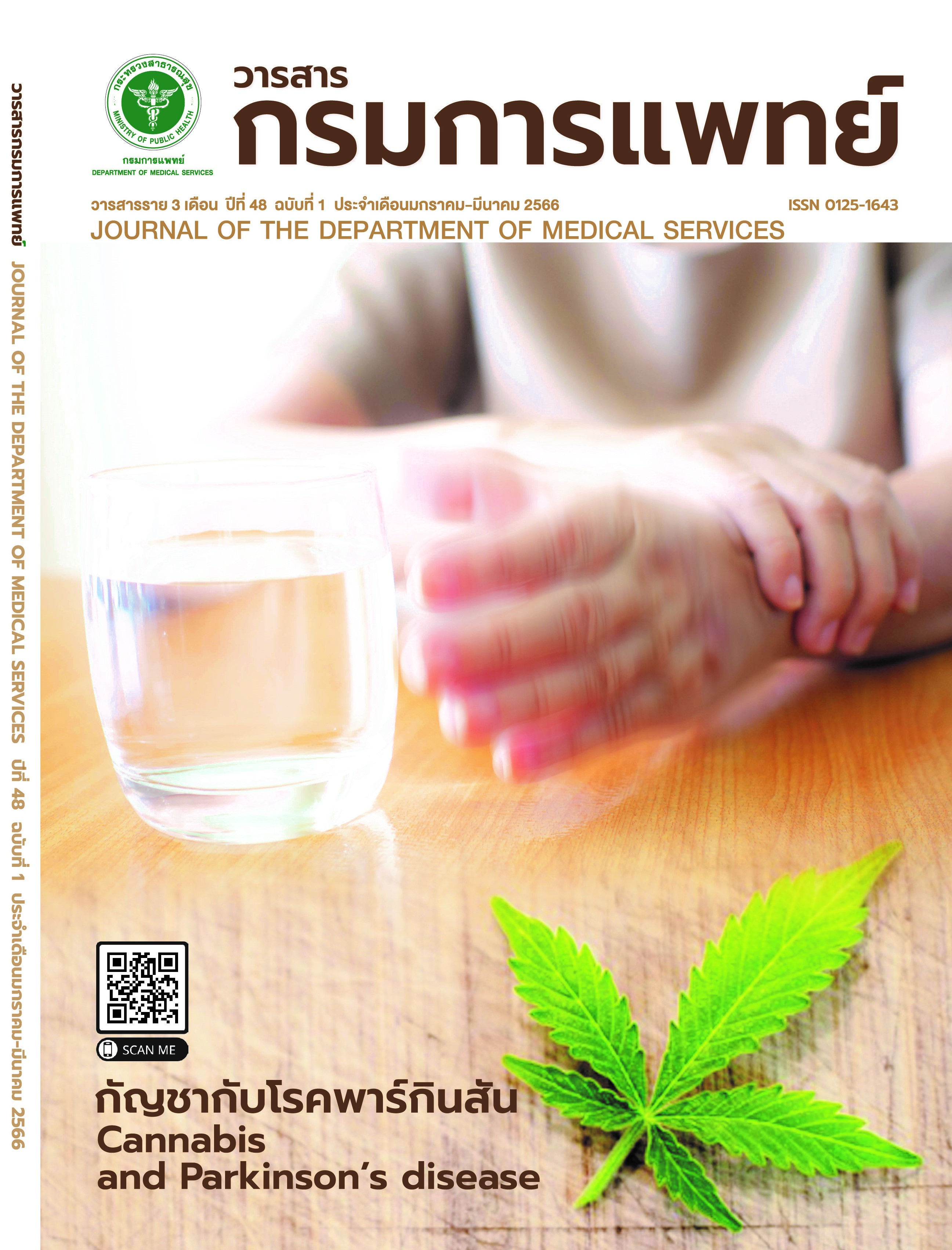Hemiplegic Patient’s Experiences after the Virtual Reality Technology (Toucher) Rehabilitation: A Qualitative Study
Keywords:
Hemiplegic patient’s, Virtual Reality Technology, RehabilitationAbstract
Background: Cerebrovascular disease is a major disease that causes disability and patients should berehabilitated. Objective: The aim of this study was to determine hemiplegia patients’ experiences after using VirtualReality Technology (Toucher). Methods: The study was a qualitative design that included semi-structured interviews.Ten hemiplegia patients were interviewed after an intervention with Toucher for 3 weeks period in OccupationalTherapy Department at Chiang Mai Neurological Hospital. The responses were analyzed using content analysis. Result: The three main findings of the study are (I) Patients’ attitudes regarding applying virtual reality technology forrehabilitation. The technology can help patients improve their affected arm. Virtual reality technology may providemotivation for rehabilitation due to the engaging games, animation, and music. (II) Virtual reality technology couldmake patients be more self-supporting in their daily activities; for example, eating, dressing, and bathing. (III) Hemiplegicpatients’ psychical activity and environmental limitations. Activities that they could execute are household choressuch as meal preparing and leisure activities. The appropriate usage of virtual reality technology in rehabilitation is20-30 minutes, 2-3 times per week as a supplement to conventional occupational therapy. Conclusion: Virtual RealityTechnology (Toucher) intervention to encourage and improve the motivation for the rehabilitation of affected armfunction after stroke in order to perform everyday activities and socialization. The result of this study can be used as abasis for technological knowledge that will be successful for rehabilitation in the future with client-centered practices.
References
Division of Non Communicable Diseases. Department ofDiseases Control. Thenumber and incident rate of stroke patientsin Thailand on 2016-2018. [internet] 2019. [cited 2020 Sep 30].Available from: http://www.thaincd.com/.
Mercier L, Audet T, Hébert R, Rochette A, Dubois MF. Impact ofmotor, cognitive, and perceptual disorders on ability to performactivities of daily living after stroke. Stroke. 2001; 32:2602-8.
Laver K, George S, Thomas S, Deutsch JE, Crotty M. Cochranereview: virtual reality for stroke rehabilitation. Eur J Phys RehabilMed. 2012; 48:523-30.
Laver KE, George S, Thomas S, Deutsch JE, Crotty M. Virtualreality for stroke rehabilitation. Cochrane Database Syst Rev.2015; 2015.
Aran OT, Şahin S, Torpil B, Demirok T, Kayıhan H. Virtual Realityand Occupational Therapy. In: Huri M,editor. OccupationalTherapy Occupation Focused Holistic in Rehabilitation.Zagreb[Croatia}:Intech; 2017.181-93.
Chen L, Lo WL, Mao YR, Ding MH, Lin Q, Li H, et al. Effect ofVirtual Reality on Postural and Balance Control in Patients withStroke: A Systematic Literature Review. Biomed Res Int. 2016;2016:7309272.
Aramaki AL, Sampaio RF, Cavalcanti A, Dutra FCMSE. Use ofclient-centered virtual reality in rehabilitation after stroke: afeasibility study. Arq Neuropsiquiatr. 2019; 77:622-31.
Fager SK, Burnfeld JM. Patients’ experiences with technologyduring inpatient rehabilitation: opportunities to supportindependence and therapeutic engagement. Disabil RehabilAssist Technol. 2014; 9:121-7.
Kaunnil A, Ritthipravat P, Thongchoomsin S, Thichanpiang P,Sansri V. Hemiplegic Clients’ Experiences after the VirtualReality (Gyro Roller) Rehabilitation on Activities of Daily Living:Qualitative Study.Journal of the Department of Medical Services.2018; 43:87-93.
Ji EK, Lee SH. Effects of virtual reality training with modifedconstraint-induced movement therapy on upper extremityfunction in acute stage stroke: a preliminary study. J Phys TherSci. 2016; 28:3168-72.
Ahn S, Hwang S. Virtual rehabilitation of upper extremity functionand independence for stoke: a meta-analysis. J Exerc Rehabil.2019; 15:358-69.
Downloads
Published
How to Cite
Issue
Section
License
Copyright (c) 2023 Department of Medical Services, Ministry of Public Health

This work is licensed under a Creative Commons Attribution-NonCommercial-NoDerivatives 4.0 International License.
บทความที่ได้รับการตีพิมพ์เป็นลิขสิทธิ์ของกรมการแพทย์ กระทรวงสาธารณสุข
ข้อความและข้อคิดเห็นต่างๆ เป็นของผู้เขียนบทความ ไม่ใช่ความเห็นของกองบรรณาธิการหรือของวารสารกรมการแพทย์


